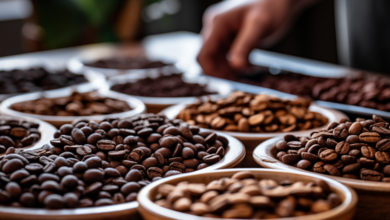Chemical Components to Make a Moisturizing Cream
- Introduction
- Importance of moisturizing creams
- Overview of chemical components in skincare
- What is a Moisturizing Cream?
- Definition and basic function
- Why hydration is essential for skin
- Main Categories of Ingredients in Moisturizers
- Emollients
- Humectants
- Occlusives
- Emollients: The Softeners of the Skin
- Function and types of emollients
- Common examples: Glycerin, Squalane
- Humectants: The Water Absorbers
- Role of humectants in hydration
- Popular humectants: Hyaluronic Acid, Propylene Glycol
- Occlusives: The Skin Barriers
- Importance of occlusives in preventing moisture loss
- Key examples: Petrolatum, Beeswax
- Active Ingredients in Moisturizers
- Role of vitamins and antioxidants
- Vitamin E and its protective effects
- Role of niacinamide in skin health
- Preservatives: Keeping the Formula Stable
- Why preservatives are needed
- Examples: Parabens, Phenoxyethanol
- Fragrances and Sensitizing Agents
- Benefits and drawbacks of fragrances
- Why some avoid scented moisturizers
- pH Balancers: Maintaining Skin Health
- Importance of pH in moisturizers
- Common pH balancers used in formulations
- Thickeners and Stabilizers
- Role in ensuring texture and consistency
- Examples: Xanthan Gum, Cetyl Alcohol
- Natural vs. Synthetic Ingredients
- Differences between natural and synthetic components
- Benefits and challenges of both
- Common Additives in Moisturizing Creams
- Additives for texture, color, and feel
- Examples: Silicones, Dimethicone
- Customizing a Moisturizing Cream for Different Skin Types
- Ingredients for oily skin
- Ingredients for dry skin
- Conclusion
- Summing up key points
- Importance of ingredient knowledge for skincare
- FAQs
- What is the difference between emollients and occlusives?
- Are preservatives safe in skincare products?
- Can I make my own moisturizing cream at home?
- Should I avoid fragrances in moisturizers?
- How do I choose a moisturizer for sensitive skin?
Chemical Components to Make a Moisturizing Cream
Introduction
Moisturizing creams are an essential part of skincare routines, designed to hydrate and protect the skin. But have you ever wondered what’s inside these lotions? The effectiveness of a moisturizer depends on its chemical components. In this article, we will explore the primary ingredients that go into making a moisturizing cream, from humectants to emollients, and even preservatives that ensure the product remains safe for use.
What is a Moisturizing Cream?
A moisturizing cream is a product designed to maintain the skin’s hydration levels by creating a barrier that traps moisture and softens the skin. Moisturizers are vital for keeping the skin smooth, preventing dryness, and protecting the skin from environmental damage. They do this by balancing the water content in the skin and replenishing any lost moisture.
Main Categories of Ingredients in Moisturizers
Moisturizing creams generally contain three main categories of ingredients:
- Emollients – These soften and smooth the skin.
- Humectants – These draw water into the skin.
- Occlusives – These lock in moisture to prevent it from evaporating.
Let’s break down these categories in more detail.
Emollients: The Softeners of the Skin
Emollients are essential for making the skin feel soft and smooth. They work by filling in the gaps between skin cells, creating a smoother surface. Emollients are often oils or lipids and are particularly useful for people with dry or rough skin.
Common emollients include:
- Glycerin – A simple and popular emollient known for its ability to attract moisture to the skin.
- Squalane – A lightweight oil that mimics the skin’s natural oils.
Humectants: The Water Absorbers
Humectants are substances that attract water from the environment into the skin, boosting its hydration levels. They are especially useful for those with dehydrated skin, as they help the skin retain moisture.
Popular humectants found in moisturizing creams include:
- Hyaluronic Acid – Known for its ability to hold up to 1,000 times its weight in water, making it a super hydrator.
- Propylene Glycol – A commonly used humectant that draws moisture from the air.
Occlusives: The Skin Barriers
Occlusives form a protective layer on the skin, preventing water from evaporating. These are especially beneficial for people with very dry skin as they help lock in hydration.
Key examples of occlusives are:
- Petrolatum – Often used in products like Vaseline, petrolatum is highly effective at creating a moisture barrier.
- Beeswax – A natural occlusive that also has antibacterial properties.
Active Ingredients in Moisturizers
Apart from the base components like emollients, humectants, and occlusives, many moisturizing creams include active ingredients that offer additional skin benefits. Some of the most common active ingredients are:
- Vitamin E – An antioxidant that protects the skin from environmental damage and helps with skin repair.
- Niacinamide – Also known as Vitamin B3, it improves skin texture, reduces redness, and boosts hydration.
Preservatives: Keeping the Formula Stable
To prevent the growth of bacteria and fungi, preservatives are added to most skincare products. While some people are concerned about preservatives, they play an important role in keeping the product safe over time.
Common preservatives include:
- Parabens – Widely used but controversial due to potential health concerns.
- Phenoxyethanol – A safer alternative that is less likely to irritate the skin.
Fragrances and Sensitizing Agents
Many moisturizers include fragrances to make them smell pleasant, but these can sometimes cause irritation, especially for sensitive skin. Some people prefer fragrance-free options to avoid potential reactions.
pH Balancers: Maintaining Skin Health
Maintaining the correct pH balance is critical in moisturizers. A formula that is too acidic or too alkaline can disrupt the skin’s natural barrier, leading to irritation. Common pH balancers include:
- Citric Acid – Used to adjust the acidity of the product.
Thickeners and Stabilizers
Thickeners are added to moisturizing creams to give them a consistent, smooth texture. Stabilizers help keep the ingredients evenly distributed.
Common thickeners and stabilizers include:
- Xanthan Gum – A plant-based thickener.
- Cetyl Alcohol – A fatty alcohol that helps stabilize and thicken the cream.
Natural vs. Synthetic Ingredients
Moisturizing creams can contain both natural and synthetic ingredients. Natural ingredients like shea butter or aloe vera are popular for their gentle properties, while synthetic ingredients are often more stable and predictable.
Common Additives in Moisturizing Creams
Many moisturizing creams also contain additives to enhance texture and feel. Some common examples are:
- Silicones – Like Dimethicone, which helps smooth the skin.
Customizing a Moisturizing Cream for Different Skin Types
Not all moisturizers are created equal. Some are designed for oily skin, while others are better for dry or sensitive skin. For example, people with oily skin might benefit from lighter formulas with humectants like hyaluronic acid, while those with dry skin may need thicker creams with more occlusives like petrolatum.
Conclusion
Understanding the chemical components in moisturizing creams can help you choose the right product for your skin type. Whether you’re looking for deep hydration, barrier protection, or anti-aging benefits, it’s all about finding the right balance of emollients, humectants, and occlusives.
FAQs
- What is the difference between emollients and occlusives?
Emollients soften and smooth the skin, while occlusives create a barrier to prevent moisture loss. - Are preservatives safe in skincare products?
Yes, most preservatives are safe in small amounts and prevent the growth of harmful bacteria and fungi. - Can I make my own moisturizing cream at home?
Yes, you can make a simple moisturizing cream with ingredients like shea butter, oils, and essential oils, but be cautious about preservatives and storage. - Should I avoid fragrances in moisturizers?
If you have sensitive skin, it may be best to avoid fragrances as they can sometimes cause irritation. - How do I choose a moisturizer for sensitive skin?
Look for fragrance-free, hypoallergenic products with soothing ingredients like aloe vera or colloidal oatmeal.



